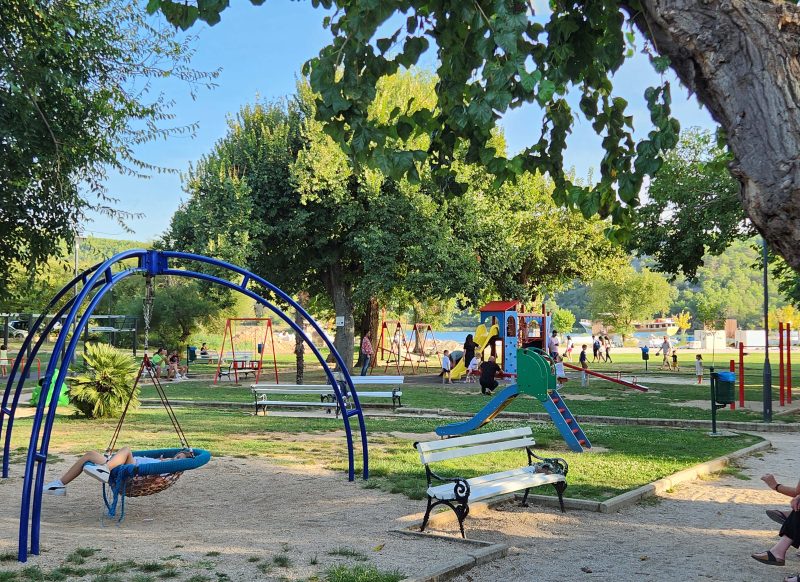ŠIBENIK / KRKA NATIONAL PARK
Yes, we’re back in Croatia on our way south and around Italy. That’s no hardship, because it’s a beautiful country. Our ship docked in Šibenik, but we spent our day in nearby Krka (‘ker-ka) National Park and in Skradinski, Croatia. Here’s what the scenery looked like as we drove to the national park.
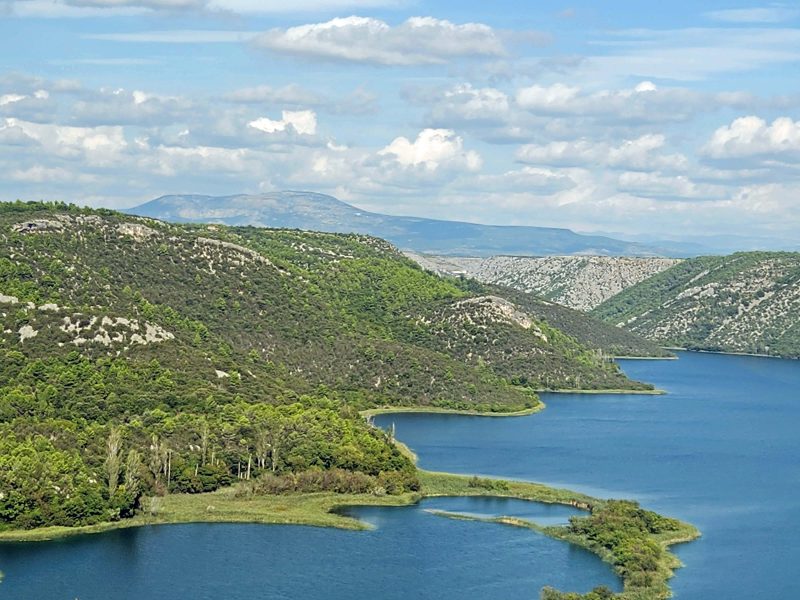
Krka National Park encompasses the entire 42 miles of the Krka River, which eventually runs to the Adriatic Sea. Here are some scenes from around the park.
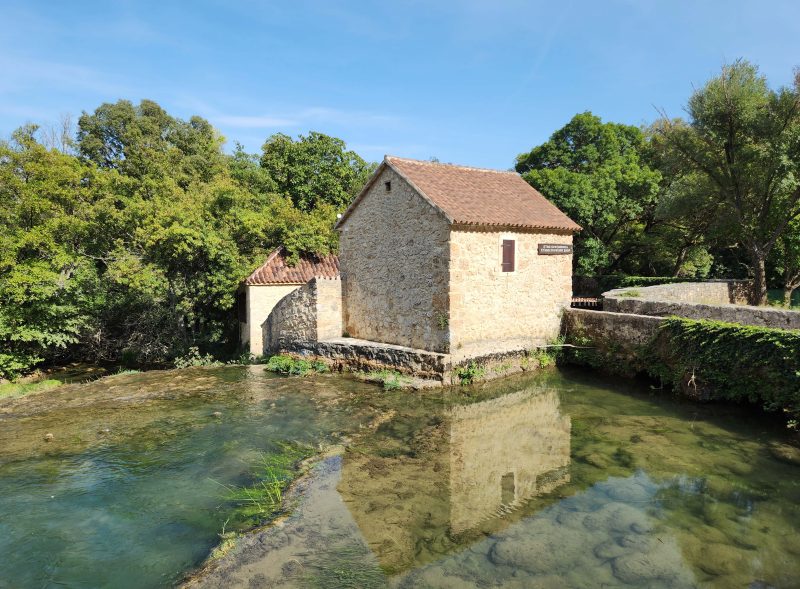
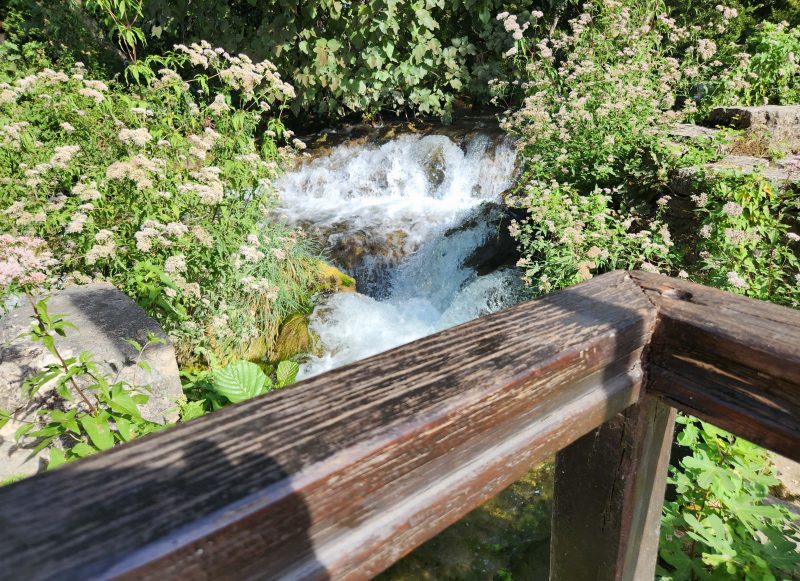
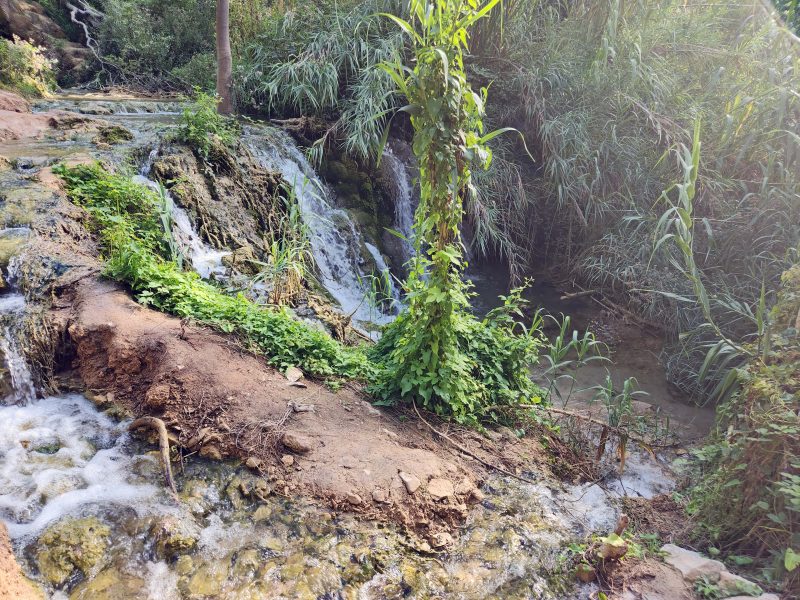
It was an easy walk today—a boardwalk with no cobblestones and only one long series of stairs. There are some hiking trails in the park, but our excursion did not include them.
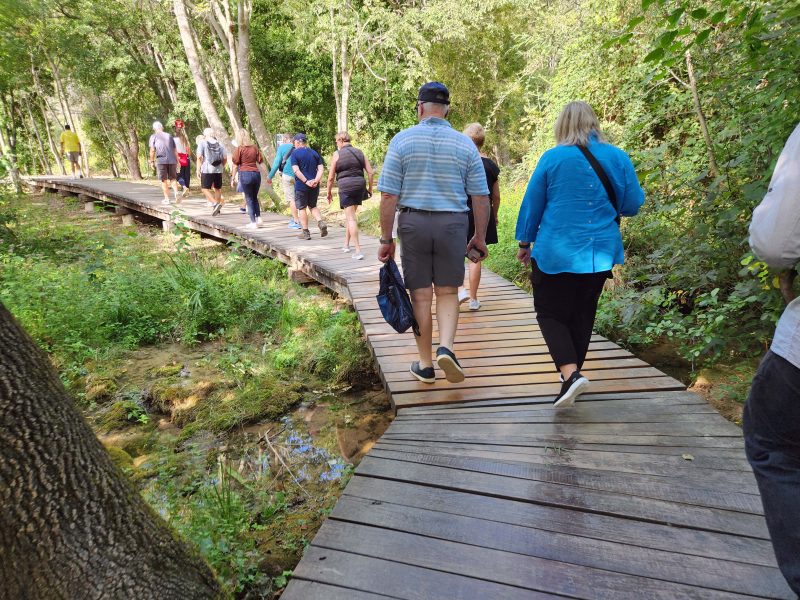
Travertine, a protected species, is a type of limestone deposited by mineral springs. Our guide pointed out the development of travertine, which begins as a mossy fern and looks like this while it’s growing on already-formed travertine rock.
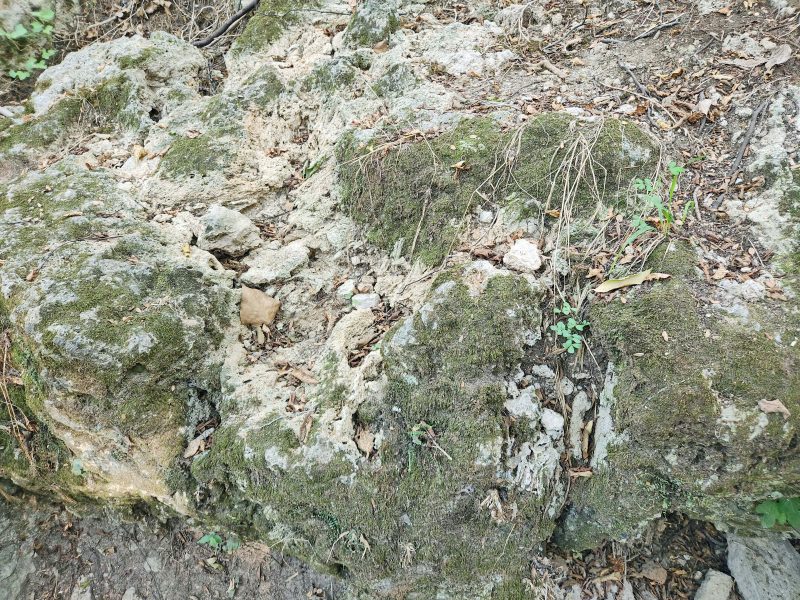
The high calcium carbonate level of the water in Krka National Park helps the travertine fern to become rock. Our guide picked up a loose fern frond (it looks like a dead one) and a loose piece of travertine rock to show us. After we’d all seen it, she returned the pieces to their original places. It’s illegal to damage travertine because it’s so slow-growing–about 3 mm per year.
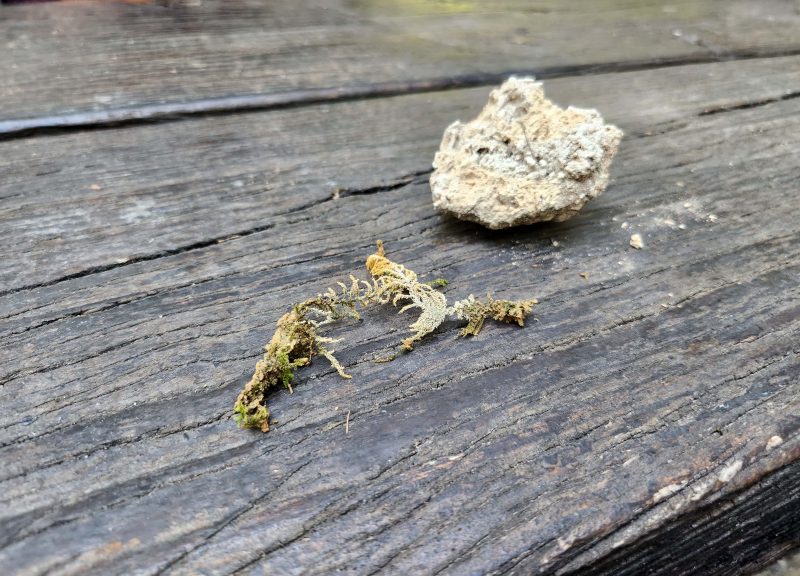
When polished, travertine looks like marble and is used for countertops, tables, buildings, etc. It’s very strong, so it’s a good insulator and suitable for building, but the downside is that it’s also very porous and deteriorates faster than other hard rocks like granite and marble. In addition, it’s a relatively high maintenance surface that requires sealing about every 3-4 months. This is what polished travertine looks like. The key to identifying it is the holes in its porous surface.
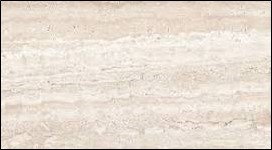
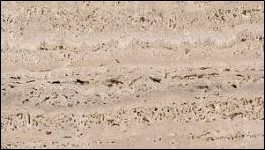
The highlight of our park tour was the Skradinski Buk, a clear, natural pool with high waterfalls at one end and cascades at the other. The waterfalls are 145 feet high and more than 2,000 feet wide. Within one-quarter mile on this stretch of the Krka River, there are 17 cascades and waterfalls with a height difference of 156 feet. That accounts for the series of staircases we climbed when our guided walk changed from downhill to uphill.
Water from the Krka River provides fifty percent of the area’s water supply. To preserve the Krka Falls when there is not enough water for the waterfall and for the power plant, the falls trump the power plant, and the power plant shuts down. There is sufficient water from other sources to meet the electrical needs of the community when this happens. You can see how clear the water is.
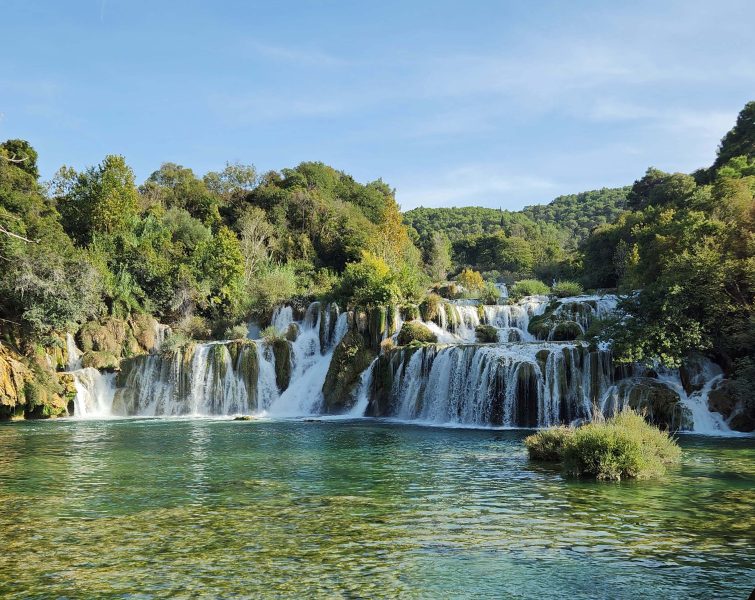
Look who visited the Skradinski Buk and the waterfalls today.
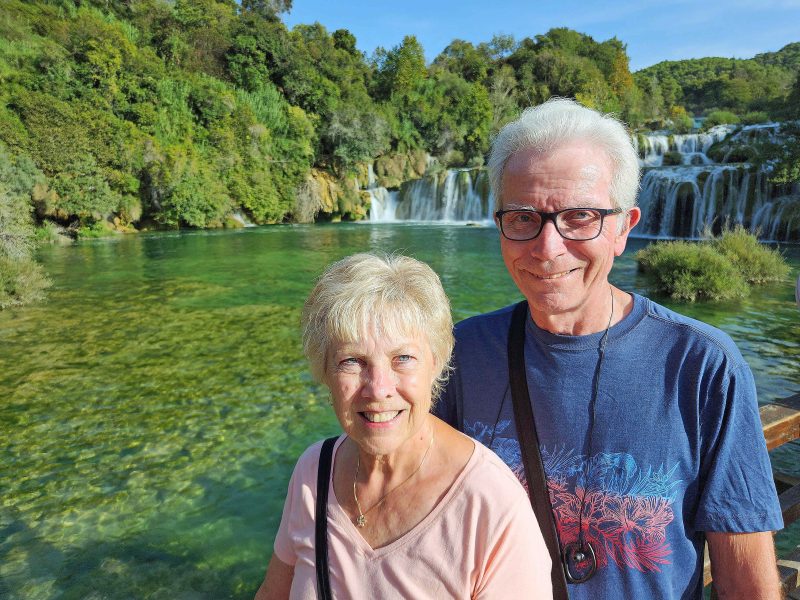
SKRADINSKI
After leaving the national park, we headed for the nearby city of Skradinski. passing more beautiful Croatian scenery along the Krka River.
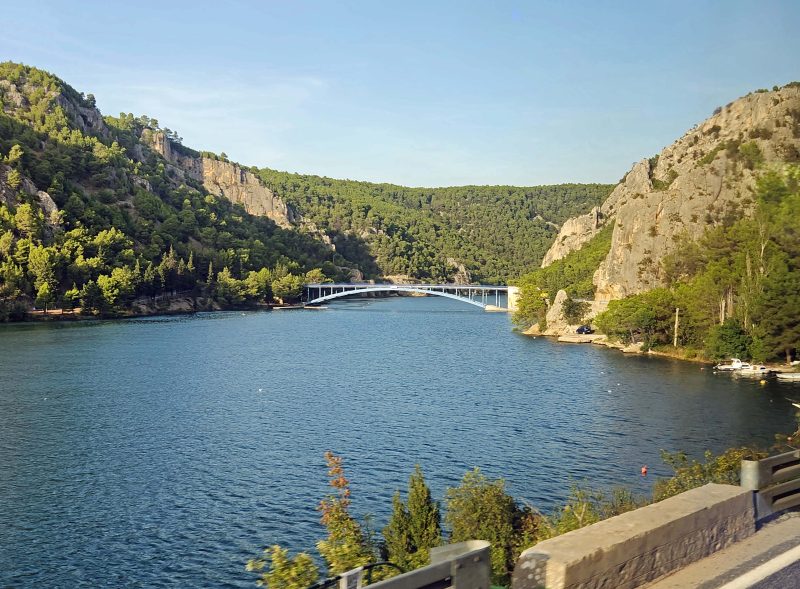
Skradinski is another UNESCO World Heritage Site, so it has the same protections as Dubrovnik and Split. Notice the boxlike structures of the windows on the two orange buildings and on the yellow building on the right side of the street.
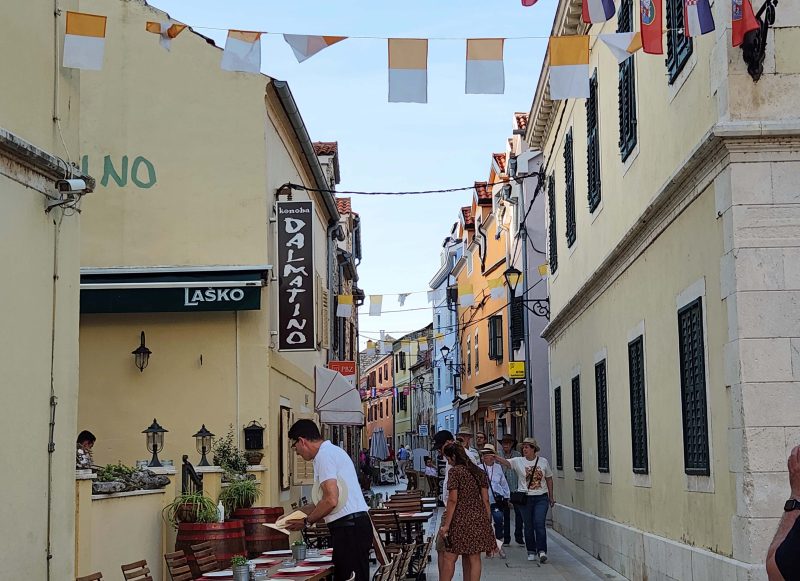
Here’s a close-up of the windows on the yellow building. It’s possible to look down through the bottom of the window box to see who is at the door below. Then you can decide if you really want to go down to let the visitor in—a precursor to the doorbell cameras of today.
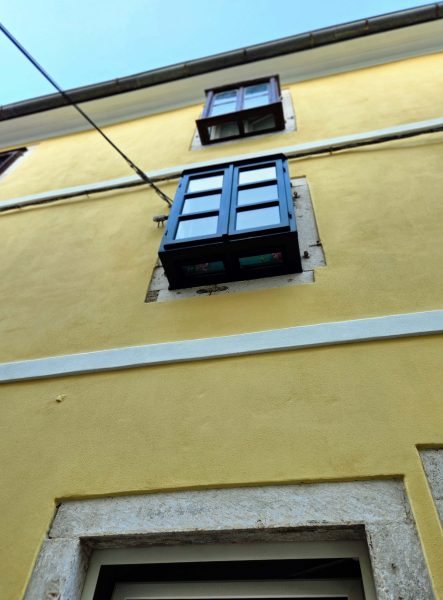
Here are some scenes from around the city.
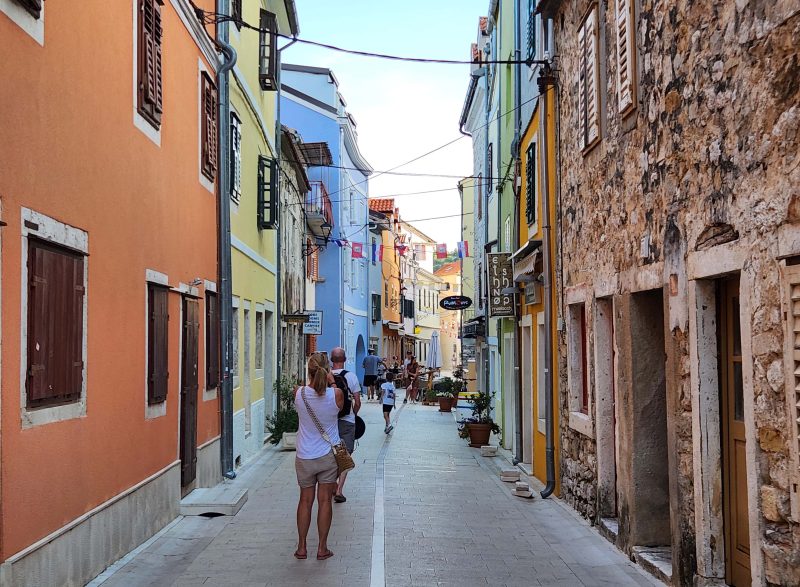

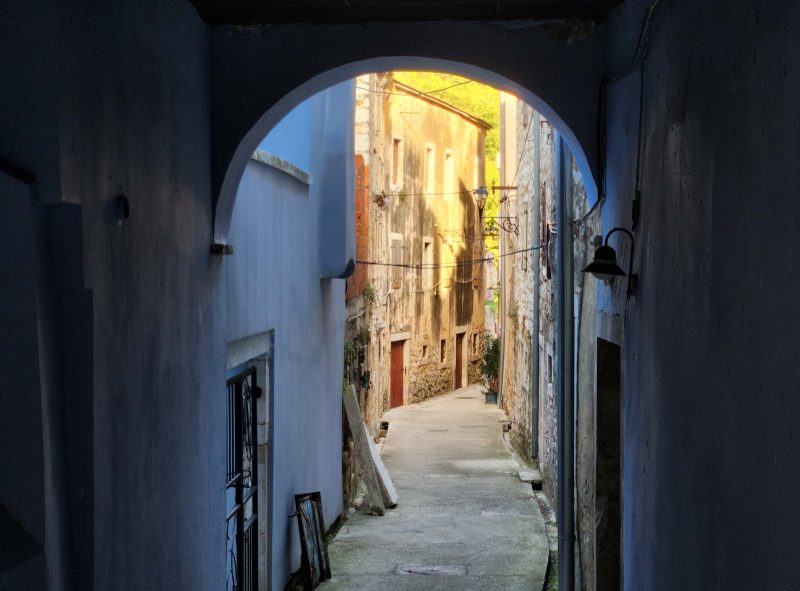
We stopped in one more small town just a short distance from Skradinski. Coincidentally, it was the hometown of our guide, who obviously lives near where she works. The town had a population of about 500. It was very pretty and not UNESCO protected, so there was a modern city park. I didn’t swing in this one. It wouldn’t have been fair to all the kids who were having fun on the playground equipment.
